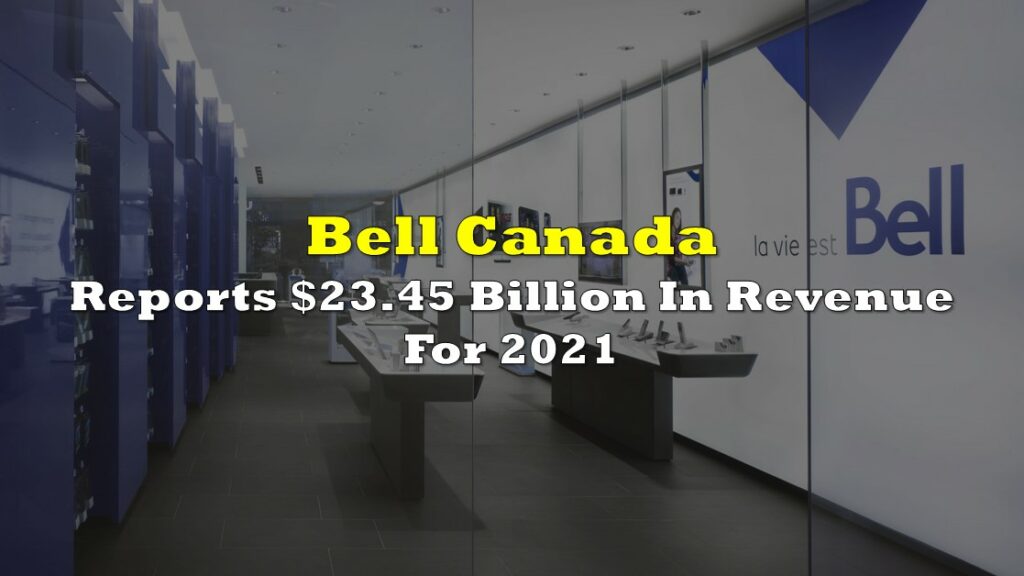BCE Inc. (TSX: BCE) has released its Q4 and full-year results for 2024, reporting operating revenues of $6.42 billion, which was a 0.8% decrease compared to the same period in 2023.
On a full-year basis, revenue also declined 1.1% to $24.41 billion from $24.67 billion. This softening in the top line partially reflected lower service revenue from the Bell Communication and Technology Services segment and a modest growth contribution from Bell Media, which posted a 1.2% revenue gain in the fourth quarter.
Bell CTS, which encompasses wireless, wireline, and business services, experienced a 1.1% decline in revenues to $5.68 billion in the quarter. Service revenue also contracted by 1.6% year over year, with weakness in legacy voice and data services.
In wireless specifically, postpaid mobile phone net activations dropped to 56,550 in Q4 from 128,715 last year as total subscriber additions slowed in a competitive market, while prepaid losses improved significantly on a year-over-year basis thanks to expanded retail distribution. Internet subscriber additions, though still positive at 34,187 in Q4, were down 38.5% from the same period in 2023.
Bell Media’s Q4 revenue improved by 1.2%, with advertising revenue up 0.4%. Subscriber revenue advanced by 2.0% in the quarter, buoyed by growth in Crave and sports direct-to-consumer streaming subscriptions. Digital’s share of total media revenue climbed to 42% for 2024 from 35% in the prior year, driven by significant demand for programmatic advertising and ad-supported streaming products.
Net earnings rose in the fourth quarter to $505 million, a 16.1% increase from the comparable period in the previous year, translating to $0.51 per share. However, for the full year, net earnings declined by 83.9% to $375 million from $2.33 billion last year, largely due to non-cash asset impairment charges of $2.19 billion, chiefly related to Bell Media’s traditional TV and radio properties.
Adjusted net earnings jumped 4.1% year over year in the quarter to $719 million, though they still declined 5.2% for the full year to $2.77 billion. The adjusted EBITDA margin reached 40.6% in the fourth quarter, up 0.9% from the same period last year, and climbing to 43.4% for the entire year—BCE’s highest annual margin in more than three decades.
Cash flows from operating activities fell 20.9% in the quarter to $1.88 billion dollars. For the full year, these cash flows totaled $6.99 billion dollars, down 12.1% from 2023.
Free cash flow for Q4 declined 32.2% year over year to $874 million and, on a full-year basis, fell 8.1% to $2.89 billion dollars. Management cited higher interest expenses, cash tax payments, and working capital usage among the factors weighing on free cash flow. However, total capex was $963 million in Q4, down 6.4% from 2023, and $3.90 billion for the full year, representing a 14.9% reduction from the previous year’s spending.
Looking ahead, BCE anticipates revenue growth could vary between a 3% decline and a 1% increase, while adjusted EBITDA could decline by as much as 2% or grow up to 2%. The company aims to reduce capital intensity to around 14% in 2025, down from 16.0% this year, by moderating fibre network expansion. Adjusted EPS is expected to experience pressure, with management guiding to a possible decline of between 8% and 13%.
The company projects stronger free cash flow momentum, forecasting an increase of 11% to 19% after an 8.1% drop in 2024. These forecasts do not include impacts from the pending divestiture of Northwestel or the proposed Ziply Fiber acquisition, which is anticipated to close in the second half of 2025.
BCE last traded at $35.90 on the TSX, jumping nearly 3% on the day following the earnings release.
Information for this briefing was found via the sources mentioned. The author has no securities or affiliations related to this organization. Not a recommendation to buy or sell. Always do additional research and consult a professional before purchasing a security. The author holds no licenses.









Canadian Capital Doesn’t Have The Guts to Make Movies
As the members of the US Screen Actor’s Guild join their counterparts in the Writers...